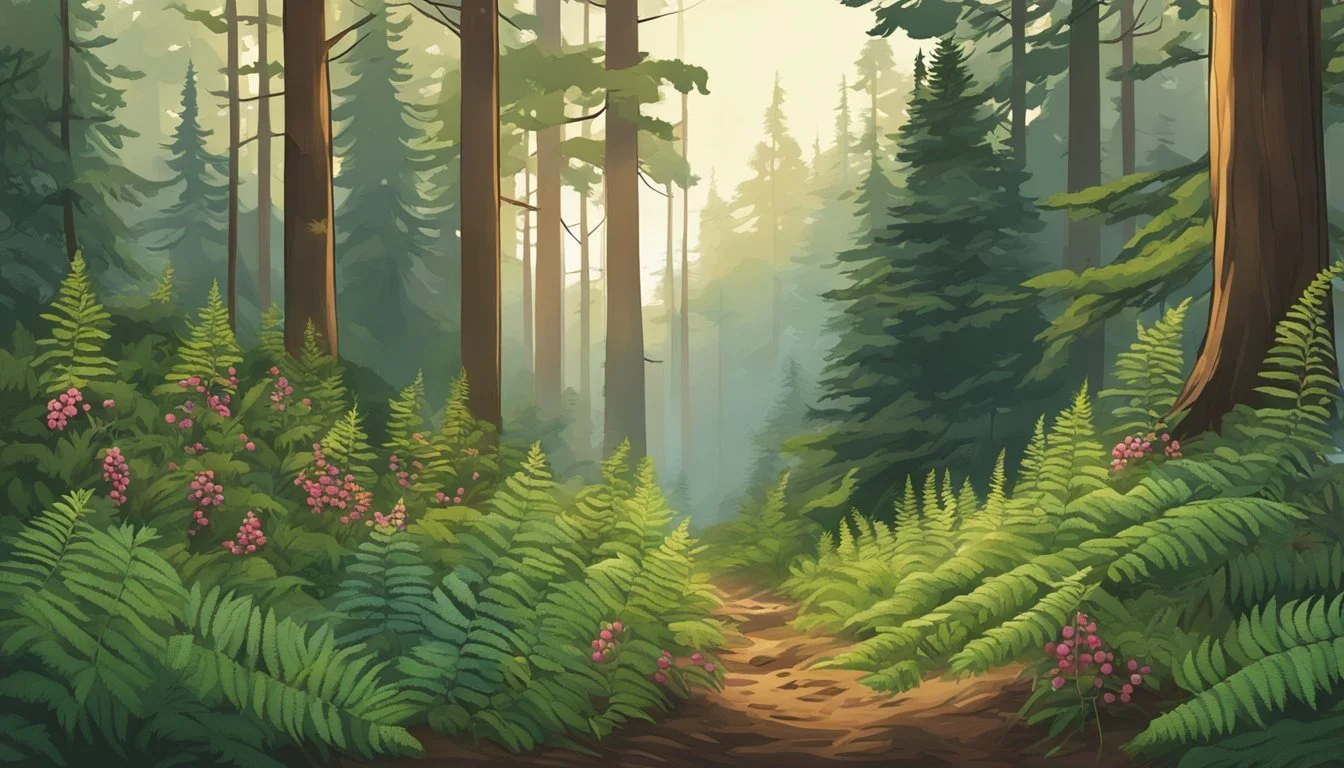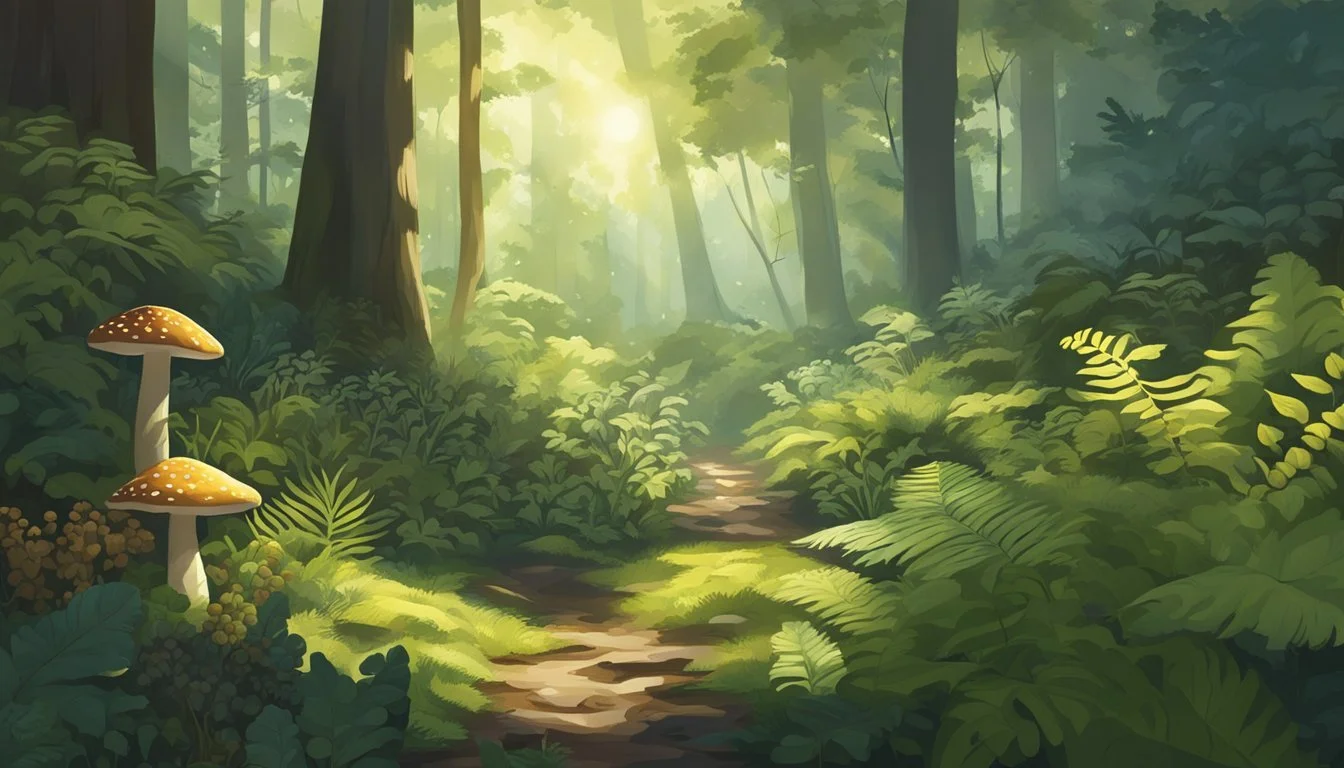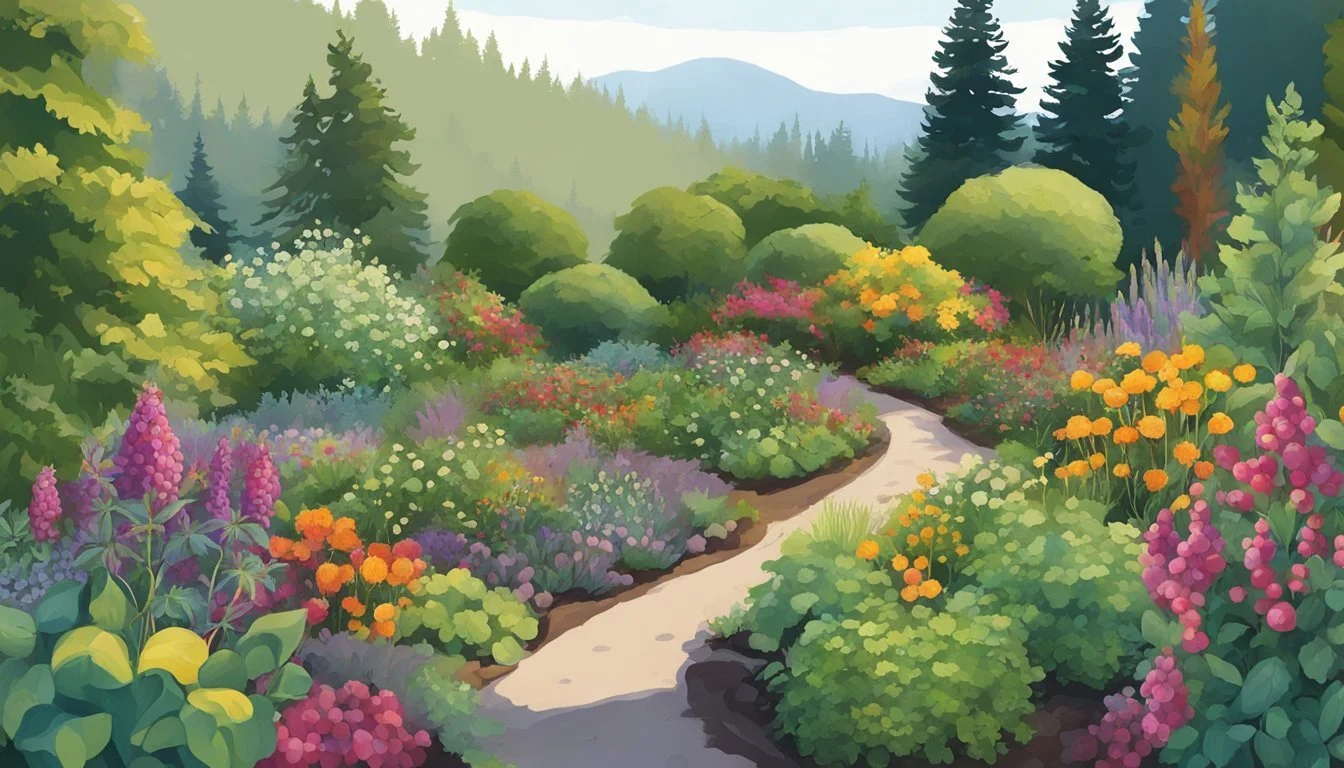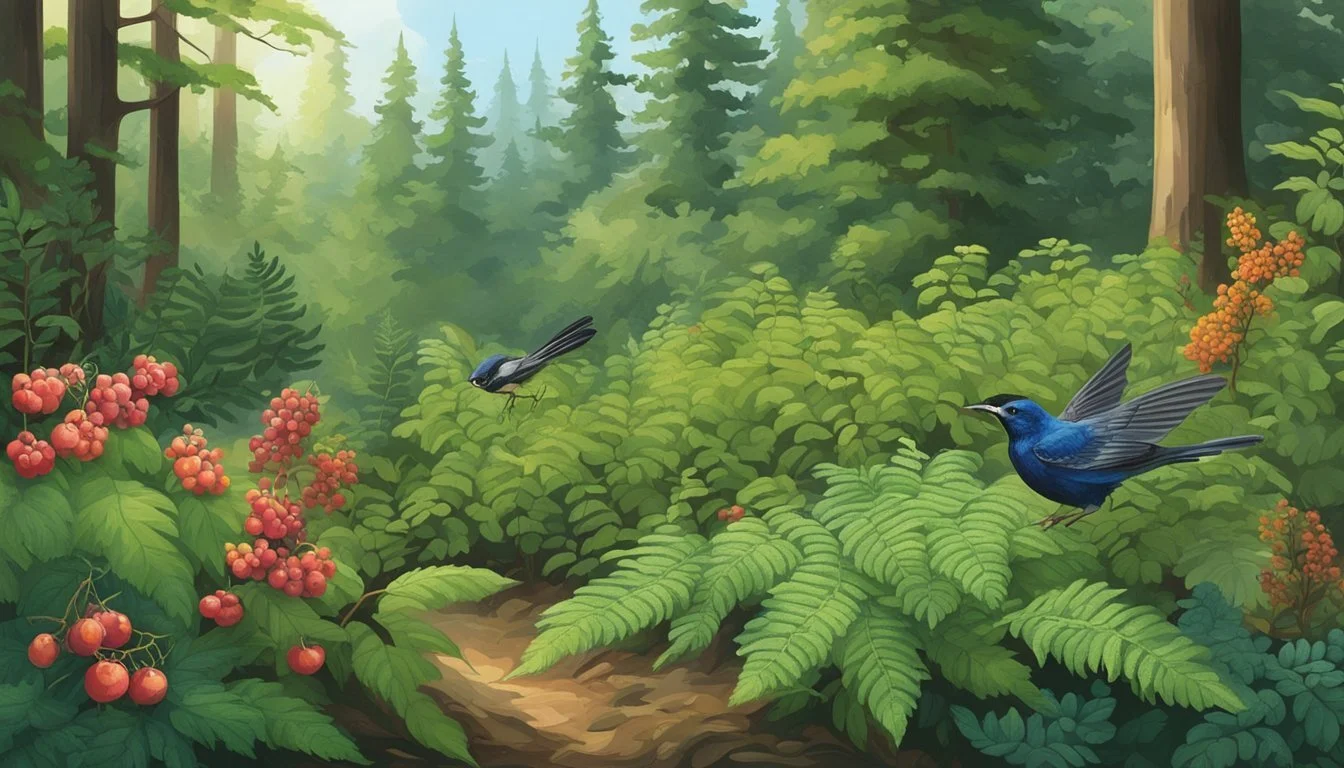Pacific Northwest Native Edible Plants
A Guide to Wild Harvesting
The Pacific Northwest offers a lush and diverse landscape teeming with native edible plants just waiting to be discovered. From the shaded forests of Washington to the coastlines of British Columbia, this region is a veritable treasure trove for foragers and nature enthusiasts alike. Knowing which plants can be safely consumed can transform a simple hike into a fruitful foraging adventure.
Among the most notable plants are the tall Oregon grape, a medium-sized evergreen shrub that thrives in partial shade and moist soil, and wild licorice, known for its sweet roots. These native plants not only provide sustenance but also play a crucial role in the local ecosystems. Identifying and understanding the edible native plants can deepen one’s connection to the land and promote sustainable foraging practices.
Discovering these indigenous culinary treasures doesn't just add variety to one's diet; it also embraces the rich heritage tied to the land. From succulent berries to hearty greens, the Pacific Northwest's natural pantry is abundant and accessible to those willing to explore it.
Historical Significance of Native Edible Plants
In the Pacific Northwest region, native edible plants played a crucial role in the daily lives of Indigenous communities. They were not only essential for sustenance but also deeply intertwined with cultural practices and traditions.
Indigenous Use
Native plants such as Camas and wild onions were dietary staples for Indigenous tribes in the Pacific Northwest. Camas bulbs, in particular, were a significant carbohydrate source and were often baked or boiled. Seasonal foraging ensured a diverse and nutritious diet, including berries, nuts, and roots.
The harvesting methods for these plants were sustainable, ensuring ongoing availability. Traditional knowledge about the best times to forage and the specific methods for preparing plants was passed down through generations. This practice maintained a balance with nature and preserved plant populations.
Cultural Heritage
The use of native plants extended beyond nutrition; they were integral to cultural and spiritual practices. For example, Camas was often collected during community gatherings, reinforcing social bonds and cultural identity. Wild strawberries and sweet grass were used in ceremonies and traditional medicines.
These plants also featured prominently in storytelling and folklore, embedding them deeply in the cultural heritage of the tribes. Preserving these traditions helps maintain a connection to the past, ensuring that the cultural significance of native plants continues to be recognized today.
Identifying Native Edible Plants
Identifying native edible plants involves recognizing key characteristics, understanding their habitat and distribution, and being aware of the seasonal timing for optimal harvesting.
Plant Characteristics
When identifying native edible plants in the Pacific Northwest, paying attention to key characteristics can help in accurate identification. Look for unique leaf shapes, flower structures, and fruit types. For example, the wood lily has distinct orange-red flowers with dark spots. Similarly, yellow glacier-lily sports bright yellow flowers that resemble small trumpets.
Berries from the wild rose are rich in vitamin C. Leaves, bark, and roots can also be distinguishing features, such as those of the wild licorice, which has long, thin roots with a sweet taste. These specifics help in differentiating edible plants from their potentially toxic counterparts.
Habitat and Distribution
Understanding the habitat and distribution of edible plants is crucial. In the Pacific Northwest, many native edible plants thrive in specific environments. Forests, coastal rainforests, and woodlands are common locations.
For instance, yellowcress often grows near water, making it prominent in wetland areas of WA, OR, and CA. Coastal environments also provide a rich diversity of plants; for example, woodsorrel is commonly found on the forest floor in shaded areas.
The dense, moist forests in the Pacific Northwest offer suitable conditions for a variety of native plants. Knowledge of these environments assists foragers in locating and identifying edible species reliably.
Seasonal Timing
Seasonal timing is essential for harvesting native edible plants. Many plants are only available during certain times of the year. For instance, wild mint is best harvested in late spring to early summer when its aromatic leaves are most potent.
Berries, such as from wild rose and elderberry, typically ripen in the late summer to early autumn. Recognizing the peak seasons for different plants ensures that foragers can gather them when they are most nutritious and flavorful.
Being aware of seasonal shifts and regional climates helps in planning foraging expeditions and guarantees that one can make the most out of the native bounty the Pacific Northwest offers.
Edible Berries and Fruits
The Pacific Northwest is home to a variety of edible berries and fruits. Some of the most notable are the Evergreen Huckleberry, Salmonberry, and Red Huckleberry. These fruits are not only delicious but also play significant roles in local ecosystems.
Evergreen Huckleberry
Evergreen Huckleberry (Vaccinium ovatum) is a small, evergreen shrub that produces sweet, dark purple berries. These berries are usually harvested in late summer through early fall. They thrive in coastal regions, favoring shaded, forested environments.
Evergreen Huckleberries are rich in antioxidants and vitamins. They can be eaten fresh or used in jams, pies, and other culinary applications. Unlike some other berries, they retain their flavor well during cooking and preservation. The plant's leaves are also notable, often used for decorative purposes.
Salmonberry
Salmonberry (Rubus spectabilis) is a striking berry with vibrant orange to red hues. Found in moist areas like forest edges and stream banks, these berries are typically harvested from late spring to early summer. Salmonberries are somewhat tart and have a unique flavor that can be eaten raw or used in preserves.
These berries have historical significance for Indigenous peoples, who utilized them not just for food, but also for medicinal purposes. The plant itself is easily recognizable by its bright, showy flowers and can also serve as an important habitat for wildlife.
Red Huckleberry
Red Huckleberry (Vaccinium parvifolium) produces small, bright red berries that are tart but flavorful. These berries ripen in late summer and are often found in the lowland forests of the Pacific Northwest. They grow best in well-draining soils and shaded areas, often on rotting logs.
Red Huckleberries are rich in vitamin C and can be enjoyed fresh or made into jellies and sauces. They were traditionally used by Indigenous tribes for both food and trade. The bright red berries serve as an important food source for birds and other wildlife, enhancing the biodiversity of their habitat.
Beneficial Shrubs and Roots
In the Pacific Northwest, specific shrubs and roots stand out for their utility and edibility. Here, we explore three notable examples—Salal, Oregon Grape, and Licorice Fern—all of which bring unique benefits to the landscape.
Salal
Salal (Gaultheria shallon) is a versatile shrub commonly found in the understory of coastal forests. This hardy plant serves well as ground cover, stabilizing soil and providing habitat for wildlife. Salal berries, which ripen in late summer, are rich in antioxidants and can be eaten fresh or used in preserves and desserts.
The leaves of Salal are also useful. Historically, they have been employed by indigenous peoples for their medicinal qualities, particularly in treating digestive issues. Salal thrives in shady environments with moist, well-drained soil, making it easy to incorporate into a variety of landscapes.
Oregon Grape
Oregon Grape (Mahonia aquifolium) is another noteworthy shrub native to the Pacific Northwest. Known for its holly-like leaves and vibrant yellow flowers, this plant is highly valued for both aesthetic and practical uses. The berries, while tart, are edible and can be used to make jellies, wines, and sauces.
Oregon Grape is also celebrated for its medicinal properties. The roots contain berberine, an alkaloid with anti-inflammatory and antibacterial effects, used traditionally to treat various ailments. This shrub performs well in a range of light conditions, from full sun to partial shade, and it can tolerate a variety of soil types, making it an adaptable choice for gardeners.
Licorice Fern
Licorice Fern (Polypodium glycyrrhiza), though not a shrub, is an important root plant found in the Pacific Northwest. The fern grows on tree trunks, fallen logs, and rocky outcrops. Its rhizomes have a distinctive sweet, licorice-like flavor, historically used by indigenous peoples for both medicinal and culinary purposes.
The rhizomes can be chewed raw for their flavor or brewed into a tea believed to soothe sore throats and coughs. Licorice Fern prefers moist, shaded forests and can be an attractive addition to woodland gardens. This plant underscores the richness of native flora, blending both utility and beauty in ecological landscapes.
Foraging Guidelines and Ethics
Responsible foraging ensures the preservation of native flora and fauna, legal compliance, and personal safety. This guide covers sustainable harvesting practices, the legal considerations you must follow, and safety measures for avoiding poisonous plants.
Sustainable Harvesting
Sustainable harvesting asks that foragers take only what they need, leaving enough plants behind to maintain local ecosystems.
Overharvesting can lead to the depletion of native species, disrupting the balance of the habitat. Foragers should identify and target invasive species where possible, helping native plants thrive by reducing competition.
Respecting growth cycles is crucial. Pick mature plants and avoid damaging roots and surrounding vegetation. This ensures plants have the chance to reproduce and sustain their populations. When harvesting mushrooms, use a knife to cut the stem instead of pulling them out, preserving the underground mycelium.
Legal Considerations
Foraging laws in the United States vary widely by state and even by local jurisdictions within states. It's important for foragers to research and understand local regulations.
In national parks and some state parks, foraging is often restricted or prohibited to protect ecological balances. In areas where it is allowed, some species of plants and mushrooms may be protected and off-limits for foraging due to their endangered status.
Permits may be required in some regions to forage legally. These permits often stipulate what can be harvested and in what quantities. Foragers should also respect private property rights and seek permission before foraging on private land.
Safety and Poisonous Plants
The Pacific Northwest is home to a diverse array of plants, some of which are toxic. Knowledge of both edible and poisonous species is essential for safe foraging.
Foragers should use reputable field guides to accurately identify plants. Many edible plants have poisonous look-alikes that can cause severe health issues or even be fatal.
It's advisable to carry a first-aid kit and have basic knowledge of treating potential poisoning symptoms. When in doubt, avoid consuming any plant or mushroom that cannot be positively identified. Test small amounts first if trying a new plant to ensure no adverse reactions occur.
By following these guidelines and being mindful of the environment and legal parameters, foragers can enjoy the benefits of nature sustainably and safely.
Culinary Uses of Native Edible Plants
Pacific Northwest native edible plants have a rich history in both traditional and modern cooking. They play a significant role in local gastronomy, offering a variety of flavors and nutritional benefits.
Traditional Cooking Methods
Native American tribes of the Pacific Northwest have long relied on local plants for sustenance. Salmonberry and huckleberry are often gathered and consumed fresh or dried. Wild onions are roasted or boiled to enhance their flavors.
Oregon grape root is another traditional staple, used for its bittersweet taste and medicinal properties. It is commonly integrated into teas and tonics. Camas bulbs are baked or steamed in earth ovens, harnessing their natural sugars.
Nettle leaves are boiled or steamed to remove their sting, then used in soups and stews. Western redcedar and other natural wraps are employed to cook fish and meat, infusing the food with a fragrant, woodsy aroma.
Modern Pacific Northwest Cuisine
Today's Pacific Northwest chefs continue to embrace local edible plants, incorporating them into innovative recipes. Wild blackberries and huckleberries are popular in desserts such as pies, jams, and jellies. Wild mint finds its place in both savory dishes and cocktails.
Wood sorrel is valued for its tangy flavor and often garnishes salads and fish dishes. Yellow glacier-lily petals are integrated into artisan cheeses and gourmet salads for their vibrant color and subtle taste.
Wild rose hips are high in Vitamin C and are used to make syrups and jellies. Licorice fern roots are dried and utilized in flavoring candies and beverages. These plants not only enrich the local cuisine but also connect modern eaters to the region's natural heritage.
Gardening with Native Edible Plants
Incorporating native edible plants into your garden supports local wildlife and provides a sustainable food source.
Landscaping for Wildlife
Native plants such as wild ginger, serviceberry, and wild rose benefit wildlife, offering food and shelter. Birds enjoy the berries of serviceberries and wild rose hips, while butterflies are attracted to the flowers. These plants thrive in the Pacific Northwest climate, providing critical habitat and food sources.
Key Points:
Birds: Serviceberries and wild rose hips.
Butterflies: Flowers such as wood lily and yellow glacier-lily.
Shelter: Dense shrubs and ground covers offer protection.
Strategically placing these plants in your garden ensures a welcoming environment for various species, enhancing biodiversity.
Creating an Edible Garden
Native edible plants not only support wildlife but also offer unique flavors and nutrition. For instance, wild licorice adds sweetness to teas, while wood sorrel imparts a lemony flavor to salads. These plants often require less water and maintenance compared to non-native species, making them ideal for sustainable gardening.
Examples:
Wild Mint: Aromatic leaves for teas and cooking.
Yellowcress: Edible greens for salads.
Wild Ginger: Spicy roots for culinary use.
Prepare the soil with organic matter to help these plants thrive. Regular pruning encourages healthy growth and abundant harvests. By carefully selecting and caring for native edibles, you create a productive and environmentally friendly garden.
Ecological Benefits and Biodiversity
Native edible plants in the Pacific Northwest play a crucial role in maintaining ecosystem health and managing invasive species, thereby contributing to biodiversity and stability.
Native Plants for Ecosystem Health
Native plants such as the Sword Fern and Yellow Glacier-lily are integral to the Pacific Northwest ecosystem. These plants are well-adapted to the region’s shade and dry climate conditions. They provide food and shelter for local wildlife, supporting a diverse range of species.
Ecological functions these plants perform include:
Soil stabilization
Water retention
Providing microhabitats
These contributions enhance the productivity and resilience of the ecosystem. By maintaining native plant populations, the region ensures a balanced and thriving environment conducive to various life forms.
Invasive Species Management
Invasive species such as Himalayan Blackberry and English Ivy pose significant threats to the Pacific Northwest’s biodiversity. Native edible plants, when promoted and protected, help combat these invasive species by outcompeting them for resources.
Management practices include:
Restoration projects: Reintroducing and cultivating native plants
Public education: Informing communities about the importance of native species
Effective invasive species management through these methods helps restore ecological balance and supports the long-term health of the region’s ecosystems. Emphasizing native plant growth over invasive species significantly aids in preserving the rich biodiversity of the Pacific Northwest.
Conservation and Restoration Efforts
Efforts to conserve and restore native edible plants in the Pacific Northwest focus on maintaining biodiversity, supporting local ecosystems, and reviving traditional plant uses. Strategic initiatives and targeted community projects play significant roles in these efforts.
Regional Conservation Initiatives
Seed banks and propagation programs are key strategies for conserving native edible plants. These initiatives aim to preserve genetic diversity and provide a reservoir of native plant species. For example, the western yew (Taxus brevifolia), known for its edible fruit and toxic foliage, benefits from such conservation efforts to ensure the species' survival.
Educational outreach programs are also crucial. They help spread awareness about the importance of native plants, teaching communities how to identify, grow, and protect these valuable resources. Groups like the Washington Native Plant Society (WNPS) support these initiatives by providing resources and organizing events that foster a greater appreciation and understanding of native flora.
Restoration Projects
Restoring native plant communities often involves reintroducing species to areas where they have been displaced. The Starflower Foundation has played a pivotal role in such projects across Seattle. By collaborating with community groups, they have successfully re-established thriving plant populations in urban areas.
Projects like those at Vesper Meadow highlight the success of targeted restoration. By focusing on specific plants like Yampah, these efforts help reinvigorate local ecosystems and maintain cultural heritage through the preservation of traditional native plants. Restoration projects not only rejuvenate the environment but also strengthen community ties through shared conservation goals.








